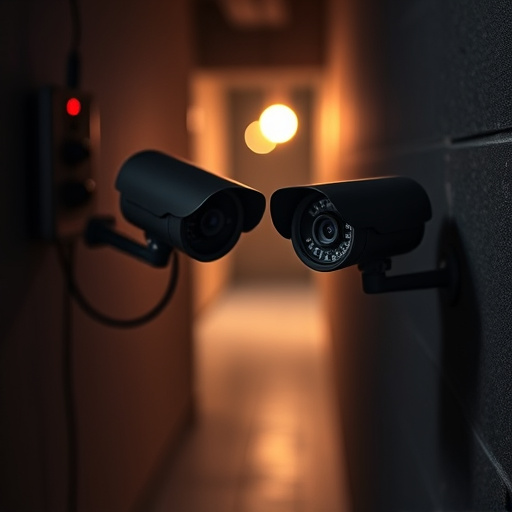Small spy cameras with audio have evolved into compact, versatile tools for various applications, from home security to law enforcement. Their discreet design and high-quality video/audio capture make them valuable for evidence collection, crime prevention, and public safety. Law enforcement agencies use these devices for real-time surveillance, gathering critical insights through audio conversations during investigations and crowd control. While beneficial, their extensive use raises privacy concerns, necessitating transparent regulations to balance public safety and individual privacy. Future advancements, including AI integration, promise enhanced capabilities with improved image and audio quality, potentially revolutionizing crime-fighting.
“In an era where technology drives law enforcement strategies, small spy cameras equipped with audio capabilities have emerged as powerful tools. This comprehensive guide explores these advanced devices, known for their discreet size and multifaceted functions. We delve into their role in enhancing public safety, from crime prevention to post-incident investigations. Balancing privacy concerns, we examine ethical considerations. Furthermore, the article forecasts future trends, highlighting how law enforcement audio cameras are set to revolutionize investigative practices.”
Understanding Small Spy Cameras with Audio: A Comprehensive Overview
Small spy cameras with audio have evolved into sophisticated, discrete devices capable of capturing high-quality video and sound in almost any environment. These miniature cameras are designed to be virtually invisible, often disguised as everyday items like keys, pens, or even clothing accessories. This stealth feature makes them ideal for a range of applications, from home security and surveillance to professional investigations.
The audio component adds a crucial layer of information, providing context and clarity that visual footage alone might not offer. Modern small spy cameras with audio are equipped with sensitive microphones that capture clear, actionable sound, ensuring every detail is heard. This capability enhances their utility in situations where accurate observation and documentation are paramount, making them a game-changer in various industries, including law enforcement, private security, and even personal surveillance.
The Role of Law Enforcement in Implementing Audio Surveillance Technology
Law enforcement agencies play a pivotal role in implementing and utilizing audio surveillance technology, particularly small spy cameras with audio capabilities. These advanced tools have become invaluable assets in maintaining public safety and securing justice. By deploying discreetly hidden devices, officers can gather critical evidence in various scenarios, from criminal investigations to crowd control during high-profile events.
The integration of audio functionality enhances the effectiveness of these tiny surveillance cameras. It allows for the capture of clear and concise conversations, providing valuable insights into criminal activities, gang communications, or even civil unrest. With real-time audio monitoring, law enforcement can swiftly respond to emergencies, make informed decisions, and ensure the safety of both citizens and officers in the field.
Benefits and Ethical Considerations: Balancing Public Safety and Privacy
The implementation of law enforcement audio cameras, often in the form of small spy cameras with audio capabilities, presents a double-edged sword for public safety and privacy. On one hand, these devices offer significant benefits to police operations, enhancing their ability to gather evidence, deter crime, and ensure officer safety. Real-time audio and visual surveillance can aid in quick incident response, providing crucial context during investigations. Moreover, small spy cameras with audio capabilities can serve as powerful tools for solving complex cases, especially in high-crime areas or during civil unrest.
However, the ethical implications cannot be overlooked. Privacy advocates argue that extensive use of such technology may lead to a surveillance state, infringing on citizens’ right to privacy. The potential for abuse and misuse is a legitimate concern, as audio recordings could capture sensitive personal conversations or intimate moments. Balancing public safety needs with individual privacy rights demands robust regulations and oversight mechanisms. Transparent policies that govern the deployment of law enforcement audio cameras, including data retention and access protocols, are essential to maintaining trust in the justice system.
Future Trends in Law Enforcement Audio Cameras: Enhancing Investigation Capabilities
The future of law enforcement audio cameras looks set to be transformed by innovative technology, offering enhanced investigation capabilities. One prominent trend is the integration of tiny, advanced spy cameras with audio recording functions. These miniature devices, often no bigger than a coin, can be discreetly placed in various environments, providing critical visual and auditory evidence. With improved image quality, night vision capabilities, and superior audio clarity, these small spy cameras are expected to become indispensable tools for crime-fighting.
The integration of artificial intelligence (AI) and machine learning algorithms further enhances their potential. AI-powered analysis can automatically detect suspicious behavior, identify individuals, and even transcribe conversations, significantly streamlining the review process. This technology promises to improve accuracy and speed up investigations, enabling law enforcement agencies to respond more effectively to crimes and secure public safety.
